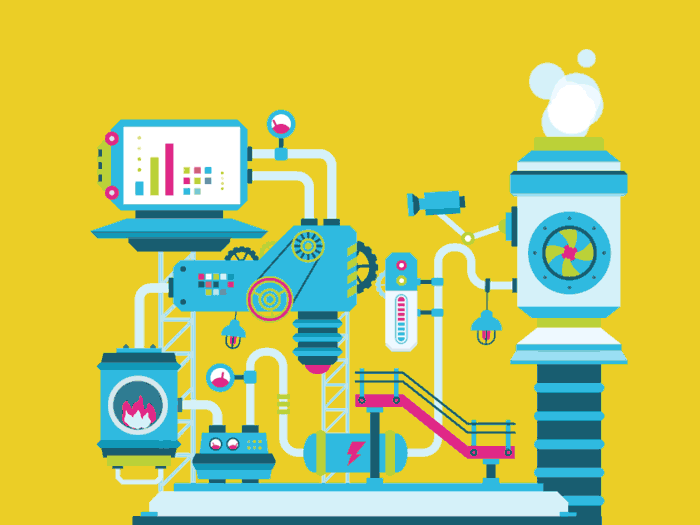The responsibilities of human resources (HR) span from setting the company’s overall mission, vision and goals through establishing shared values to maintaining a dynamic talent pool. Being a vital element of corporate operations—and playing a fundamental role in business performance—HR departments adopt HR software solutions to streamline processes and support organisational health.
Human Resource Management (HRM) plays a pivotal role in organisational development that establishes the joint culture—a notion that goes beyond improving employer reputation among job seekers for attraction. HRM is responsible for identifying problems and strategising possible solutions, providing guidance and training to employees, and resolving conflicts on a 24/7 open-door policy. Research has shown that if the working environment is healthy, employees will work at high engagement levels, which translates to increased business performance.
Creating such an ideal scenario is achievable if line managers—often taking the roles of coaches and mentors—have an undisrupted focus on their people. Simplified administration prevents shattering HR professionals’ attention to pieces, as they do not waste time anymore handling repetitive tasks.
With expectations of HR growing, specialists have to show their significance. Using metrics is the correct approach, as figures never lie (interpretation may fail). This evolution has fuelled businesses to adopt “HR software” to manage staff-related data. (Experts also use acronyms such as HRIS for “human resources information system” and HRMS for “human resource management system”.)
Choosing the Ultimate HR Software
Before adopting an application, a business needs to clearly understand operations and the expected functions a solution must bring to the table to ensure it will support staff.
If a corporation seeks outstanding performance, it must choose digital tools that tap into all areas of human resources; no business can settle for a compromise in this regard. If one functionality remains uncovered, organisational health will suffer. Therefore, six essential features are non-negotiable to finding a complete package.
1. Applicant tracking system
Applicant tracking system (ATS) is proven to be a successful tool that recruiters adopt to support talent search. If a company runs recruitment on its own, a dedicated module for the task is vital. Recruitment agencies can significantly boost workflow by streamlining processes through the following features:
- Seamless communication with the candidates via customised email templates and automated triggers.
- Online document and intelligent data management supported by automation.
- Streamlined search in candidate resume text, profiles and notes left by colleagues.
- Recruiters can set up candidate status to overview the processes.
- Support for integrating CVs into the system from external sources—such as recruitment agencies (in line with GDPR compliance standards).
Using such a tool relieves staff from complex manual administration and non-centralised information storage. It gives access to line managers to take care of their candidates, reducing the workload from HR. It also assists employer branding through customised career landing pages so businesses can feature vacancies to increase brand authority. Reducing the number of dull tasks and keeping all necessary data at recruiters’ fingertips increase focus on applicants, leading to one of a kind candidate experience.
2. Employee onboarding
Managers can concentrate more on their people by automating tedious onboarding processes—through preset checklists and automated notifications. Supporting their integration into the unfamiliar environment through establishing deep personal connections is critical in decreasing turnover; professionals have long argued that onboarding plays a vital role in retaining new hires.
Turning paper-based administration to digital helps HR to monitor the onboarding status, enhancing control over the entire process. Automatically generating employment contracts and documents (accompanied by digital signatures) enhances internal procedures to save time.
3. Employee database and records
Storing data on paper or in inflexible spreadsheets may suffice for smaller companies; however, keeping files in a thorough employee database helps nurture better staff relations. Versatile tools offer a hand in adjusting the system to expand business needs.
Digital storage of knowledge—contact details, bio, skills, qualifications, interests, work record, organisational relationships, salaries, benefits, and role—in one place provides a clear overview of employees while supporting administrative accuracy. Furthermore, keeping digital records makes it easier to remain GDPR compliant and to remove records on request.
Colleagues can get to know each other better through personal information they make available for peers in the system, which leads to enhanced team synergy.
4. In-built payroll
Human resources modules must interact with the payroll system, preferably with a module developed by the same software engineers. Seamless integration between the employee and payroll databases ensures that changes—e.g. leave balance or overtime—are automatically available for payroll calculations and reporting, cutting administration time and enhancing cooperation and communication between departments.
Essential payroll software features are cloud computing, automation, calculations, reporting, integration, and continuous development and support. Beyond increasing accuracy in payroll management, automation can take care of payslip generation, distribution, and bank transfers. Employees can access their payslips and FFS documentation through the platform, and payroll clerks can export encrypted employee data in formats supported by most banks for the issuance of payments (SCTE and XML).
5. Leave management
Line managers receive automatic leave notifications to review through the approval system so they can accept/reject requests. Different permission levels enable users to get full access to their leave management, depending on their roles.
Keeping track of the entire company’s leave balances allows for thorough data analyses to identify employees at risk of burning out, decrease unplanned absences, monitor trends and visualise days off in calendar view to see staff out of the office. Digital leave management enables allocating entitlements in bulk/individually and assigning various allotments in different countries (for international companies).
6. Time and attendance
Cloud-based applications knock out obsolete practices (punch cards and handwritten timesheets) through time logs for transparent time and attendance management, while in-built review-approval mechanisms speed up processes. Automation-based features send data to the payroll system for further calculations.
HR Software Solutions for Smart Managers
HR software must maintain top security and confidentiality standards via fully encrypted and certified servers. It also has to support data import from third-party systems to make processes smart and ensure that managers have constant access to valuable tools.
Digital solutions must also be adaptable. A company may run with only a few members when introducing the system, but businesses grow exponentially; the HR suite must handle scaling from a staff of five to hundreds without disruption.
Business performance depends on the output and dedication of employees. The more engaged and happy they are, the better their work drives the organisation forward. To reach high-efficiency levels, staff need to know that the HR department supports them on every level, for which managers need undisrupted focus. Adopting a solution that answers all the needs of managers allows them to focus on their most valuable asset: people.
Talexio offers a custom solution for all your organisational needs to support HR departments in helping their people grow. We bring a complete HR suite to the table, providing cloud-based tools for maximising organisational health and making daily processes smarter and faster. Based in Malta, the Payroll module within Talexio is specifically designed for companies operating within the Maltese framework.







